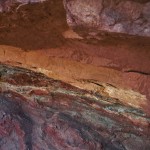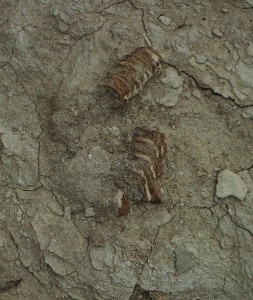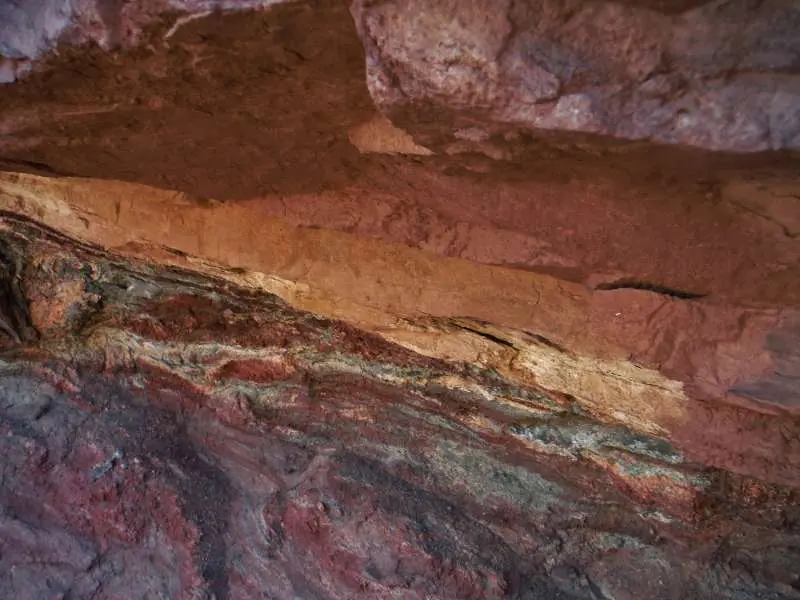
Beautiful, delicious layer cakes are often used in weddings, birthdays, and other celebrations. Monday, January 11, 2016 marks the 378th birthday of Nicolaus Steno, who was a brilliant creation scientist of history, best known for his groundbreaking work in the field of geology. While you could eat a piece of layer cake in his honor, only do so to help you celebrate his work with rock layers, as he used the Bible to interpret earth history. Steno is considered the founding father of stratigraphy, which is the branch of geology that studies the relative positions of rock layers and how they were laid down. Born in Denmark in 1638, Nicolaus Steno was originally named “Niels Stensen” but changed his name after moving to Italy for his profession as a medical doctor. He was first known for his scientific research in anatomy, which later led to his interest in paleontology while he was comparing the teeth of modern sharks with local fossil shark teeth.

During his time, it was fairly common to believe that fossils were not really the remains of once-living creatures, but naturally occurring things in the earth that just looked like animals and shells. Many Christians of the time thought that God created the rocks with the fossils in them, not that they were buried in the flood. Steno was a Catholic priest who took his beliefs in the Bible very seriously. He believed that the Bible is key to understanding nature – especially earth history. Steno noticed that there were fossil sea creatures on mountain tops and concluded that they are the result of Noah’s flood, which he determined must have been about four thousand years ago, in agreement with the Bible.
While his ideas seemed quite revolutionary, he said that his ideas were not really new, but based on Scripture as well as what he saw in nature. Steno noticed that the rock layers seemed to show that the entire earth had been covered in water twice, which he concluded happened first during the original creation week and second during Noah’s flood. Speaking of creation week, he said:
“In regard to the first aspect of the earth Scripture and Nature agree in this, that all things were covered with water; how and when this aspect began, and how long it lasted, Nature says not, Scripture relates” – Pg. 263, Steno’s Prodromus (Winters translation)
Steno realized that ages cannot really be determined from just the rocks, but that we also need to know a little bit about history to interpret the rocks – history based first on the Bible. Though most modern Biblical young-earth geologists would have slightly different interpretations on exactly where the specific strata happened in earth history (e.g, creation rock, flood rock, or post-flood formation), the basic principles are the same. This great geologist noticed that most fossil-bearing rock was laid down during the global flood:
“The formation of hills from the deposit of the sea bears witness to the fact that the sea was higher than it is now . . . Nature does not oppose Scripture in determining how great that height of the sea was, seeing that . . . definite traces of the sea remain in places raised several hundreds of feet above the level of the sea” – Pg. 265, Steno’s Prodromus (Winters translation)
He also thought of many of the physical mechanisms involved in the flood, like underground water and rising of the ocean floors. Nicolaus Steno was truly scientist ahead of his time, studying anatomy, fossils, strata, crystals, and the Bible. In historical science, he is best known for his principles of stratigraphy, explaining the logic of how layers are laid down in order (read more about how some of his principles work here). He completed his work before the times of Charles Darwin, Charles Lyell, or James Hutton who pushed the ideas of old-earth (millions of years) and evolution.
 Though Steno was a Biblical creationist who believed that science confirmed the age of Earth is about six thousand years, much of his work has been twisted and re-interpreted as supporting old-earth and evolution. His original principles did not require million of years, but only talked about relative sequence of the rocks and how they correlate across the globe. The points where Steno’s principles have been stretched to sound like they require long ages have actually been disproved with lab experiments in recent years. While this scientist is frequently mentioned in geology classes, rarely is the important influence that his faith had on his work mentioned. Nicolaus Steno was a man of God who saw science as a way to glorify his Creator.
Though Steno was a Biblical creationist who believed that science confirmed the age of Earth is about six thousand years, much of his work has been twisted and re-interpreted as supporting old-earth and evolution. His original principles did not require million of years, but only talked about relative sequence of the rocks and how they correlate across the globe. The points where Steno’s principles have been stretched to sound like they require long ages have actually been disproved with lab experiments in recent years. While this scientist is frequently mentioned in geology classes, rarely is the important influence that his faith had on his work mentioned. Nicolaus Steno was a man of God who saw science as a way to glorify his Creator.
Copyright Sara J. Bruegel, January 2016
References
- “Geological pioneer Nicolaus Steno was a Biblical Creationist” , by Tas Walker. Journal of Creation 22(1):pp 93–98. April 2008. Creation Ministries International. Last accessed Jan. 8, 2016. http://creation.com/geological-pioneer-nicolaus-steno-was-a-biblical-creationist
- “Google Doodle Celebrates Creation Geologist”, by Brian Thomas. January 19, 2012. Instituge for Creation Research. Last accessed Janurya 8, 2016. http://www.icr.org/article/google-doodle-celebrates-creation-geologist
- “Great Creation Scientists: Nicolas Steno (1638–1686); Founder of Modern Geology and Young-Earth Creationist”, by Ann Lamont. Originally published in Creation 23, no 4 (September 2002): 47-49. Answers in Genesis. Last accessed January 8, 2016. https://answersingenesis.org/creation-scientists/great-creation-scientists-nicolas-steno/






